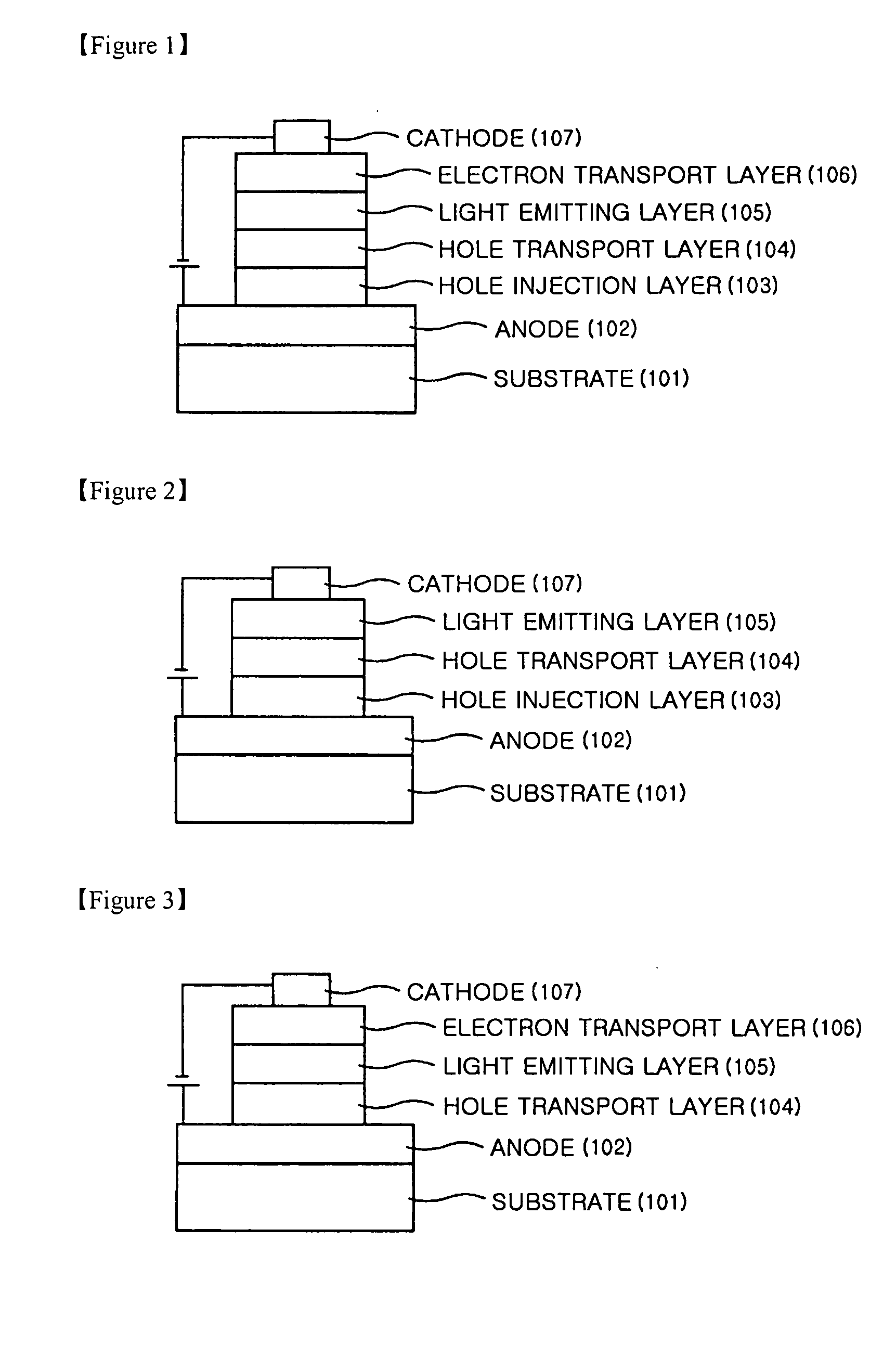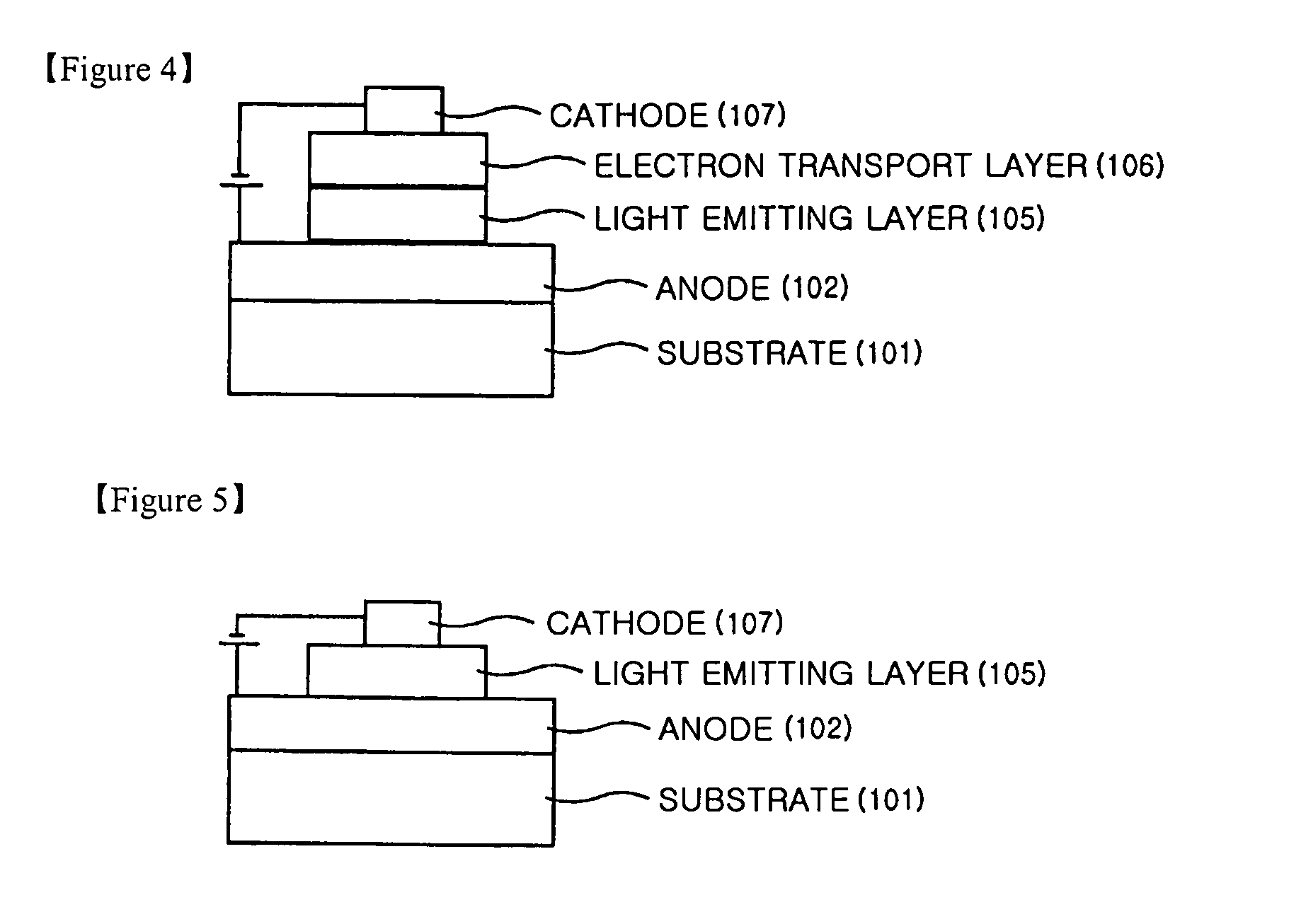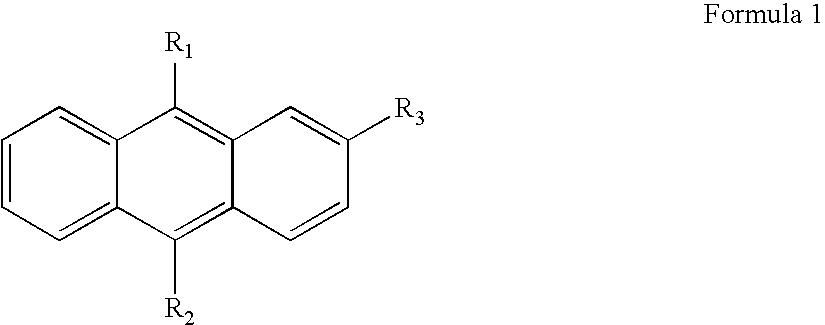Anthracene derivatives and organic light emitting device using the same as a light emitting material
anthracene derivative and light-emitting device technology, applied in the direction of discharge tube luminescnet screen, organic chemistry, natural mineral layered products, etc., can solve the problem of high voltage and achieve the effect of improving the life of an organic light-emitting device and low voltage driving
- Summary
- Abstract
- Description
- Claims
- Application Information
AI Technical Summary
Benefits of technology
Problems solved by technology
Method used
Image
Examples
preparation example 1
[0040] Preparation of a Compound of Formula 2
[0041] Bromobenzene (8.7 mmol, 1.36 g) was added to 100 mL of dried THF to be completely dissolved therein, and t-butyl lithium (8.5 ml, 1.7 M solution in hexane) was very slowly added thereto at −78° C. After 1 hour, the starting material of Formula a (2.90 mmol, 0.82 g) was added to the reactants. After 30 min, a cooling vessel was removed, and a reaction was conducted at room temperature for 3 hours. After the reaction was finished, NH4Cl aqueous solution was added thereto, and extraction was conducted using ethyl ether. The extract was dried, using anhydrous magnesium sulfate, and concentrated. After a small amount of ethyl ether was added thereto and stirring was conducted, petroleum ether was added and stirring was conducted. Subsequently, filtering and drying were conducted to obtain 1.00 g of dialcohols (2.27 mmol, 78%).
[0042] The resulting dialcohols (1.0 g, 2.27 mmol), potassium iodide (3.77 g, 22.7 mmol), and sodium hypophos...
preparation example 2
[0044] Preparation of a Compound of Formula 3
[0045] Bromobenzene (8.7 mmol, 1.36 g) was added to 100 mL of dried THF to be completely dissolved therein, and t-butyl lithium (8.5 ml, 1.7 M solution in hexane) was very slowly added thereto at −78° C. After 1 hour, the starting material of Formula b (2.90 mmol, 0.97 g) was added to the reactants. After 30 min, a cooling vessel was removed, and the reaction was conducted at room temperature for 3 hours. After the reaction was finished, an NH4Cl aqueous solution was added thereto, and extraction was conducted using ethyl ether. The extract was dried using anhydrous magnesium sulfate and concentrated. A small amount of ethyl ether and petroleum ether were sequentially added thereto, and stirring was conducted for 15 hours. The solid product was filtered and dried to produce 1.30 g of dialcohols (2.65 mmol, 91%).
[0046] The resulting dialcohols (1.30 g, 2.65 mmol), potassium iodide (4.40 g, 26.5 mmol), and sodium hypophosphite (5.60 g, 5...
preparation example 3
[0047] Preparation of a Compound of Formula 4
[0048] The procedure of preparation example 2 was repeated to produce the compound of Formula 4 (1.10 g, 2.41 mmol, 90%) except that the starting material of Formula c was used instead of the starting material of Formula b. MS [M+H] 457.
PUM
| Property | Measurement | Unit |
|---|---|---|
| Fraction | aaaaa | aaaaa |
| Time | aaaaa | aaaaa |
| Time | aaaaa | aaaaa |
Abstract
Description
Claims
Application Information
 Login to View More
Login to View More - R&D
- Intellectual Property
- Life Sciences
- Materials
- Tech Scout
- Unparalleled Data Quality
- Higher Quality Content
- 60% Fewer Hallucinations
Browse by: Latest US Patents, China's latest patents, Technical Efficacy Thesaurus, Application Domain, Technology Topic, Popular Technical Reports.
© 2025 PatSnap. All rights reserved.Legal|Privacy policy|Modern Slavery Act Transparency Statement|Sitemap|About US| Contact US: help@patsnap.com



